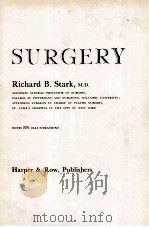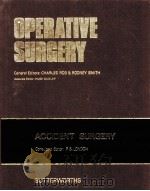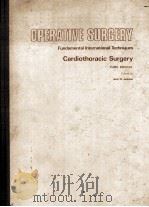《Surgery》
| 作者 | Richard Warren 编者 |
|---|---|
| 出版 | W.B.Saunders Company. |
| 参考页数 | 1397 |
| 出版时间 | 1963(求助前请核对) 目录预览 |
| ISBN号 | 无 — 求助条款 |
| PDF编号 | 818102578(仅供预览,未存储实际文件) |
| 求助格式 | 扫描PDF(若分多册发行,每次仅能受理1册) |
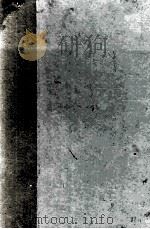
Chapter One1
WOUND HEALING&In collaboration with J.Englebert Dunphy,M.D.1
Chapter Two22
WOUND MANAGEMENT22
Chapter Three47
GRAFTING AND SUBSTITUTION&In collaboration with Richard E.Wilson,M.D.,and Joseph E.Murray,M.D.47
Chapter Four74
THE SYSTEMIC EFFECTS OF TRAUMA&In collaboration with Francis D.Moore,M.D.74
Chapter Five100
VISCERAL DISEASE IN SURGICAL PATIENTS100
Gastrointestinal Tract100
Respiratory Tract126
Cardiovascular System139
Liver145
Endocrine System149
Urinary Tract158
Coagulation Mechanism166
Chapter Six176
THERAPY:ENTERAL AND PARENTERAL&In collaboration with Francis D.Moore,M.D.176
Chapter Seven203
BURNS&In collaboration with Francis D.Moore,M.D.203
Chapter Eight221
INFECTIONS221
Chapter Nine251
TUMORS251
Chapter Ten276
ANESTHESIA&In collaboration with Leroy D.Vandam,M.D.276
Chapter Eleven314
THE BRAIN&Contributed by William H.Sweet,M.D.314
Chapter Twelve370
THE SPINAL CORD&Contributed by Donald D.Matson,M.D.370
Chapter Thirteen403
THE PERIPHERAL NERVES&Contributed by Donald D.Matson,M.D.403
Chapter Fourteen420
PAIN&Contributed by James C.White,M.D.420
Chapter Fifteen442
THE EYE&Contributed by Garrett L.Sullivan,M.D.442
Chapter Sixteen472
THE EAR&Contributed by Donald K.Lewis,M.D.472
Chapter Seventeen498
THE NOSE,SINUSES,AND NASOPHARYNX&Contributed by John R.Richardson,M.D.498
Chapter Eighteen518
THE PHARYNX,HYPOPHARYNX,AND LARYNX&Contributed by George F.Reed,M.D.518
Chapter Nineteen542
THE FACE,MOUTH,AND JAWS&Contributed by Joseph E.Murray,M.D.542
Chapter Twenty563
THE THYROID AND PARATHYROID&Contributed by Oliver Cope,M.D.563
The Thyroid563
The Parathyroid581
Chapter Twenty-One598
CHEST WALL,LUNGS,AND MEDIASTINUM&Contributed by J.Gordon Scannell,M.D.598
Chapter Twenty-Two650
THE HEART650
Chapter Twenty-Three691
THE ESOPHAGUS AND DIAPHRAGM&Contributed by George L.Nardi,M.D.691
The Esophagus691
The Diaphragm710
Chapter Twenty-Four717
THE BREAST&Contributed by Andrew G.Jessiman,M.D.717
Chapter Twenty-Five744
THE GASTROINTESTINAL TRACT AND THE ACUTE ABDOMEN&Contributed by Francis D.Moore,M.D.744
Chapter Twenty-Six824
LIVER,BILIARY TRACT,PANCREAS,AND SPLEEN&Contributed by William V.McDermott,M.D.824
Liver824
Biliary Tract840
Pancreas852
Spleen867
Chapter Twenty-Seven879
HERNIA AND THE ABDOMINAL WALL879
Chapter Twenty-Eight901
THE GENITOURINARY TRACT AND ADRENALS&Contributed by J.Hartwell Harrison,M.D.901
Genitourinary Tract901
Adrenal Gland948
Chapter Twenty-Nine960
THE FEMALE REPRODUCTIVE TRACT&Contributed by Somers H.Sturgis,M.D.960
Chapter Thirty1002
ARTERIES,VEINS,AND LYMPHATICS1002
Arteries1005
Veins1038
Lymphatics1048
Chapter Thirty-One1058
THE MUSCULOSKELETAL SYSTEM&Contributed by William T.Green,M.D.,and Mihran O.Tachdjian,M.D.1058
Orthopedic Principles and Methods1058
Congenital Deformities1075
Bone1087
Joints1121
Muscles,Tendons,Bursae,and the Neuromuscular System1143
The Hand1166
The Spine and Pelvis1189
The Foot1199
Chapter Thirty-Two1217
FRACTURES,DISLOCATIONS,AND SPRAINS&Contributed by Thomas B.Quigley,M.D.1217
Chapter Thirty-Three1267
EXTENSIVE TRAUMA1267
Chapter Thirty-Four1283
NEONATAL SURGERY&Contributed by W.Hardy Hendren,M.D.1283
INDEX OF NAMES1347
INDEX OF SUBJECTS1365
List of Jllustrations3
Figure 1.Granulation tissue3
Figure 2.Rate of epithelization4
Figure 3.Gillman's concept of epithelial migration5
Figure 4.Wound contraction6
Figure 5.Hexosamine,chondroitin sulfate and collagen formation in the healing wound9
Figure 6.Tensile strength of experimental wounds in different tissues10
Figure 7.Structural process of bone healing12
Figure 8.Wallerian degeneration12
Figure 9.Effect of methionine on wounds in protein-starved rats16
Figure 10.Keloid formation18
Figure 11.Types of wound25
Figure 12.Cavitation in missile tract26
Figure 13.Contrecoup trauma26
Figure 14.Wound excision29
Figure 15.Delayed primary closure30
Figure 16.Secondary closure32
Figure 17.Methods of suturing certain tissues36
Figure 18.Z-plasty38
Figure 19.Skin grafts40
Figure 20.Pedicle flap41
Figure 21.One type of dressing for a skin graft43
Figure 22.Dressing technique44
Figure 23.The transplanted kidney in situ50
Figure 24.Immunologic principles of skin homograft rejection in man52
Figure 25.Demonstration of"cell-bound"antibodies57
Figure 26.Acquired tolerance and-adoptive immunity59
Figure 27.Homograft rejection reaction60
Figure 28.The millipore filter chamber in vivo64
Figure 29.Homograft take in irradiated rabbit65
Figure 30.Closed elective soft tissue operation of moderate severity76
Figure 31.Nitrogen balance,caloric intake,and weight following trauma77
Figure 32.Weight-curves in several settings80
Figure 33.Alterations in coagulation factors postoperatively82
Figure 34.Varying degrees of trauma85
Figure 35.Activation of volume conservation86
Figure 36.The various stages of progression of shock90
Figure 37.Factors affecting contractility and irritability in heart and artery96
Figure 38.Effect of definitive operation on severe injury96
Figure 39.Blood supply to the intestinal wall103
Figure 40.Sites of fluid loss in intestinal obstruction103
Figure 41.Visible peristalsis107
Figure 42.Distribution of gas shadows in small and large intestinal obstruction109
Figure 43.Intestinal intubation110
Figure 44.Two forms of small bowel obstruction112
Figure 45.Duodenal fistula118
Figure 46.Appearance of experimental starvation120
Figure 47.Lung volumes127
Figure 48.Emphysema and barrel chest130
Figure 49.Relationship of vital capacity to maximum breathing capacity131
Figure 50.Estimate of"operative risk"on the basis of pulmonary function132
Figure 51.Cardiorespiratory factors associated with operation133
Figure 52.Causes of retained secretions134
Figure 53.Effects of tracheostomy on ventilatory factors136
Figure 54.Intermittent positive pressure breathing with tracheostomy137
Figure 55.Electrocardiographic evidence of changes in serum potassium141
Figure 56.Some cardiac arrhythmias occurring after operation143
Figure 57.Hepatic failure147
Figure 58.Adrenocortical steroids149
Figure 59.Adrenal failure152
Figure 60.Arterial calcification in the diabetic156
Figure 61.Pathogenesis of renal failure161
Figure 62.Calcific embolus to kidney162
Figure 63.Acute renal failure162
Figure 64.The artificial kidney164
Figure 65.The coagulation mechanism170
Figure 66.Fibrinolytic purpura171
Figure 67.Intravenous infusion-special techniques178
Figure 68.Plasma storage186
Figure 69.Processing of blood for frozen storage192
Figure 70.Major group crossmatching of blood193
Figure 71.Flow sheet of safe transfusion195
Figure 72.Deterioration of blood in the bank196
Figure 73.Classification of burns according to depth204
Figure 74.The Rule of Nines205
Figure 75.Body composition in burns207
Figure 76.Major burns - weight changes209
Figure 77.Exposure treatment of the burn wound213
Figure 78.Metabolic events after an extensive burn217
Figure 79.Fourth degree burns218
Figure 80.Loss of function due to infection227
Figure 81.Fluctuation230
Figure 82.Testing of sensitivity of organism to antibacterial drugs232
Figure 83.Carbuncle234
Figure 84.Four types of temperature chart236
Figure 85.Pseudomembranous enterocolitis237
Figure 86.Tetanus240
Figure 87.Modern autoclave245
Figure 88.Effect of scrubbing on the bacteria count246
Figure 89.Experimental cancer253
Figure 90.Avenues of spread of cancer255
Figure 91.Classification of grade of cancer257
Figure 92.Types of biopsy259
Figure 93.Papanicolaou vaginal smears260
Figure 94.Radiation dermatitis265
Figure 95.Radiotherapy of lymphoma267
Figure 96.Limb perfusion271
Figure 97.Local infiltration and field block282
Figure 98.Nerve block283
Figure 99.Spinal anesthesia284
Figure 100.Anesthesia machine286
Figure 101.Endotracheal intubation287
Figure 102.Static electricity293
Figure 103.Hypothermia induced by refrigerated blankets296
Figure 104.Pump oxygenator298
Figure 105.Signs and stages of anesthesia305
Figure 106.Cardiac massage (manual systole)308
Figure 107.Artificial respiration310
Figure 108.Paravertebral lumbar block311
Figure 109.Papilledema316
Figure 110.Herniations of the brain317
Figure 111.Sites of origin of motor,sensory,and psychic seizures319
Figure 112.Loudness balance test324
Figure 113.Changes in skull evoked by increased intracranial pressure327
Figure 114.Electroencephalographic localization of focal intracranial lesion328
Figure 115.Isotopic encephalography330
Figure 116.Normal cerebral angiogram331
Figure 117.Pneumoencephalogram332
Figure 118.Ventriculoatriostomy and ventriculocisternostomy335
Figure 119.Traumatic intracranial hematomas338
Figure 120.Subdural hematoma339
Figure 121.Glioblastoma multiforme343
Figure 122.Craniopharyngioma346
Figure 123.Acoustic neurinoma348
Figure 124.Intracranial aneurysm351
Figure 125.Arteriovenous malformation353
Figure 126.Position for unconscious patient362
Figure 127.Lumbar puncture373
Figure 128.Cistern puncture374
Figure 129.Spina bifida376
Figure 130.Arnold-Chiari malformation378
Figure 131.Preferred position for transporting patient with cervical spine injury381
Figure 132.Compression fracture of vertebra383
Figure 133.Fracture-dislocation of C4 and C5384
Figure 134.Decubitus ulcers386
Figure 135.Tidal drainage387
Figure 136.Rehabilitation in paraplegia388
Figure 137.Patient with ruptured intervertebral disc on left391
Figure 138.Rupture of intervertebral lumbar disc-myelogram392
Figure 139.Rupture of intervertebral cervical disc394
Figure 140.Tumor of cauda equina396
Figure 141.Extradural sarcoma398
Figure 142.Radial nerve division above elbow410
Figure 143.Median nerve division above elbow410
Figure 144.Ulnar nerve division411
Figure 145.Common peroneal nerve division412
Figure 146.Tibial nerve division412
Figure 147.Erb's palsy414
Figure 148.Brachial plexus stretch injury414
Figure 149.Posterior spinal root section421
Figure 150.Retrogasserian rhizotomy by temporal approach422
Figure 151.Sectioning trigeminal and glossopharyngeal nerves423
Figure 152.Anterolateral cordotomy424
Figure 153.The cardiac nerves431
Figure 154.Upper thoracic sympathetic ganglionectomy432
Figure 155.Dorsal and lumbar sympathetic ganglionectomy and splanchnicectomy433
Figure 156.The globus oculi445
Figure 157.Perforating wound of globe449
Figure 158.Removal of intraocular foreign body450
Figure 159.The eyelid452
Figure 160.Chalazion453
Figure 161.Basal cell carcinoma of lower lid454
Figure 162.Pterygium456
Figure 163.The lacrimal apparatus458
Figure 164.Glaucoma462
Figure 165.Cataract464
Figure 166.Cataract extraction465
Figure 167.Melanotic sacroma with associated detachment of the retina466
Figure 168.Medial wall of tympanic cavity474
Figure 169.Audiogram478
Figure 170.Acute otitis media483
Figure 171.Mastoiditis-x-ray486
Figure 172.Endaural incisions488
Figure 173.Mastoidectomy488
Figure 174.Types of tympanoplasty489
Figure 175.Fenestration operation before closing of cavity492
Figure 176.Directional forces for mobilizing the stapes493
Figure 177.Stapedectomy plus prosthetic replacement494
Figure 178.External nose-structure and relationships500
Figure 179.Nasal septum502
Figure 180.Nasal septum - arterial blood supply503
Figure 181.Posterior nasal plug505
Figure 182.Lateral nasal wall506
Figure 183.Lateral nasal wall508
Figure 184.Coronal section through nose509
Figure 185.Pathway of spread of infection from acute frontal sinusitis510
Figure 186.Maxillary sinus511
Figure 187.Pharyngeal abscesses - typical locations521
Figure 188.Two views of the larynx527
Figure 189.Technique of mirror laryngoscopy527
Figure 190.Emergency tracheostomy531
Figure 191.Chronic disorders of the larynx534
Figure 192.Arytenoidectomy536
Figure 193.Laryngocele538
Figure 194.Laryngectomy540
Figure 195.Distribution of cervical lymph nodes544
Figure 196.Severe complete bilateral harelip545
Figure 197.Prognathism546
Figure 198.Hemangioma in a child546
Figure 199.Macroglossia547
Figure 200.Usual sites of fracture in the mandible549
Figure 201.Usual fracture lines of mid-third of face550
Figure 202.Facial expression lines553
Figure 203.Malignant melanoma554
Figure 204.Carcinoma of upper lip555
Figure 205.Intraoral cancer556
Figure 206.Metastatic epidemoid carcinoma in neck node557
Figure 207.Mixed tumor of the parotid560
Figure 208.The control of thyroid function565
Figure 209.The motor nerves to the larynx568
Figure 210.The postulated sequence in development of nodular goiter574
Figure 211.Lymph node areas577
Figure 212.Distribution of bony involvement in fibrous dysplasia of bone588
Figure 213.Distribution of parathyroid glands590
Figure 214.Water-clear cell hyperplasia591
Figure 215.Chief-cell hyperplasia591
Figure 216.Mediastinal parathyroid adenomas594
Figure 217.Blood serum calcium and phosphorus levels595
Figure 218.Surface landmarks of chest600
Figure 219.Funnel chest602
Figure 220.Pendulum air604
Figure 221.Traumatic asphyxia605
Figure 222.Subcutaneous emphysema606
Figure 223.Two forms of closed chest drainage607
Figure 224.Model simulating pleural pressures611
Figure 225.Types of pneumothorax612
Figure 226.Mechanical forces at play on a localized empyema cavity613
Figure 227.Segmental anatomy of the lung617
Figure 228.Lymphatic drainage of the lung620
Figure 229.Emphysematous blebs and pneumothorax622
Figure 230.Bronchographic anatomy and bronchiectasis628
Figure 231.Tuberculosis of the lung631
Figure 232.Radiologic manifestations of cancer of the lung638
Figure 233.Distant metastases of cancer of the lung639
Figure 234.Operability and survival after resection of cancer of lung642
Figure 235.Neurofibroma of the mediastinum645
Figure 236.Right heart catheterization652
Figure 237.Left heart catheterization652
Figure 238.Pressures and oxygen saturations of the blood in normal heart653
Figure 239.Pulse contours and pressures in heart chambers654
Figure 240.X-ray views of the heart657
Figure 241.Fetal circulation658
Figure 242.Patent ductus arteriosus unaccompanied by pulmonary arterial hypertension659
Figure 243.Patent ductus arteriosus with pulmonary arterial hypertension659
Figure 244.Heart of 10 mm.embryo661
Figure 245.Interatrial septal defect662
Figure 246.Interventricular septal defect of moderately large size664
Figure 247.Pulmonic valvular stenosis with intact interventricular septum666
Figure 248.Tetralogy of Fallot-moderate cyanosis667
Figure 249.Tetralogy of Fallot-characteristic squatting position667
Figure 250.Tetralogy of Fallot-available operative procedures668
Figure 251.Congenital valvular aortic stenosis669
Figure 252.Complete transposition of great arteries670
Figure 253.Cardiac wound with tamponade671
Figure 254.Mitral stenosis,moderately severe672
Figure 255.Mitral stenosis674
Figure 256.Calcific aortic stenosis677
Figure 257.Aortic insufficiency680
Figure 258.Aortic insufficiency680
Figure 259.Coronary arteriosclerosis684
Figure 260.Constrictive pericarditis685
Figure 261.Spontaneous rupture of the esophagus694
Figure 262.Development of a pharyngeal diverticulum696
Figure 263.X-ray appearance of pharyngeal diverticulum697
Figure 264.X-ray appearance of lower esophageal ring698
Figure 265.Caustic stenosis699
Figure 266.Types of esophageal reconstruction700
Figure 267.Leiomyoma of the esophagus701
Figure 268.Operative removal of leiomyoma of the esophagus701
Figure 269.Carcinoma of esophagus,x-ray appearance702
Figure 270.Esophagospasm704
Figure 271.Gastritis and gastroesophageal reflux706
Figure 272.Achalasia of the esophagus707
Figure 273.The Heller procedure708
Figure 274.Sliding hiatus hernia711
Figure 275.Sliding hiatus hernia711
Figure 276.Hormonal factors influencing the breast719
Figure 277.Examination of the axilla720
Figure 278.Physical signs of benign and malignant tumors722
Figure 279.Drainage of breast abscess724
Figure 280.Spread of breast cancer729
Figure 281.Histologic types of breast carcinoma730
Figure 282.Clinical stages 1 and 2 of breast carcinoma733
Figure 283.Radical mastectomy734
Figure 284.Operative field at the completion of dissection735
Figure 285.Clinical stage 3 of breast carcinoma737
Figure 286.Carcinoma of the stomach752
Figure 287.Carcinoma of the stomach754
Figure 288.Duodenal ulcer756
Figure 289.Gastric outlet obstruction759
Figure 290.Ulcer surgery in search of a rationale763
Figure 291.The stomach as an"osmotic shield"768
Figure 292.Large benign gastric ulcer770
Figure 293.Leiomyoma of the stomach774
Figure 294.Duodenal polyp774
Figure 295.Regional enteritis777
Figure 296.Carcinoid of the small bowel780
Figure 297.Acute appendicitis784
Figure 298.Carcinoma of the colon in congenital polyposis789
Figure 299.Lymphatics of the colon793
Figure 300.Operations for carcinoma of the colon794
Figure 301.Ulcerative colitis799
Figure 302.Exteriorization of the gastrointestinal tract801
Figure 303.Diverticulitis of the sigmoid803
Figure 304.Anatomy of anus807
Figure 305.Hemorrhoids809
Figure 306.Perianal and perineal fistulas811
Figure 307.Prolapse of the rectum and enterocele813
Figure 308.The major types of portal cirrhosis826
Figure 309.Pathogenesis of ascites828
Figure 310.Ammonia metabolism829
Figure 311.Arterial spider830
Figure 312.Esophageal varices-x-ray831
Figure 313.Splenoportography832
Figure 314.Balloon tamponade of esophageal and gastric varices832
Figure 315.Types of porto-systemic shunt834
Figure 316.Relief of ascites by portacaval shunt836
Figure 317.Bilirubin metabolism841
Figure 318.Pathogenesis of acute cholecystitis845
Figure 319.Common duct stones847
Figure 320.Operative cholangiogram849
Figure 321.Operations for pancreatitis858
Figure 322.Carcinoma of head of the pancreas860
Figure 323.Whipple operation (pancreaticoduodenal resection for cancer)861
Figure 324.The surgical treatment of pseudocyst of the pancreas863
Figure 325.Traumatic rupture of spleen868
Figure 326.Platelet response to splenectomy873
Figure 327.Sites of hernia881
Figure 328.Sliding hernia881
Figure 329.Varix simulating hernia886
Figure 330.Some hernia repairs889
Figure 331.Reduction of hernia by taxis890
Figure 332.Incisional hernia892
Figure 333.Interstitial hernia892
Figure 334.Langer's lines of skin elasticity895
Figure 335.Abdominal incisions896
Figure 336.Polycystic disease904
Figure 337.Horseshoe kidney905
Figure 338.Ectopic pelvic kidney905
Figure 339.Congenital hydronephrosis906
Figure 340.Duplication of ureter and pelvis907
Figure 341.Trauma to the kidney909
Figure 342.Pyelonephritis912
Figure 343.Renal cortical abscess913
Figure 344.Bilateral urinary calculi918
Figure 345.Renal carcinoma920
Figure 346.Renal hypertension924
Figure 347.Rupture of bladder926
Figure 348.Lymphatic drainage of pelvic organs928
Figure 349.Ruptured urethra931
Figure 350.The hypertrophied prostate933
Figure 351.Carcinoma of prostate with metastases936
Figure 352.Hydrocele of tunica vaginalis943
Figure 353.Torsion of spermatic cord943
Figure 354.Tumor of the testis946
Figure 355.Virilizing adrenal tumor950
Figure 356.Hyperadrenocorticism952
Figure 357.Common locations for pheochromocytoma953
Figure 358.Catecholamines in pheochromocytoma954
Figure 359.Congenital anomalies of the uterus964
Figure 360.Ovarian dysgenesis965
Figure 361.Female pseudohermaphroditism966
Figure 362.Congenital eversion of the cervix967
Figure 363.Retrodisplacement of the uterus968
Figure 364.Pessaries for retrodisplacement970
Figure 365.Acute bartholinitis973
Figure 366.Monilia975
Figure 367.Endocervical polyp977
Figure 368.Multiple uterine fibroids977
Figure 369.Calcified fibroid978
Figure 370.Schiller test979
Figure 371.Conization of the cervix980
Figure 372.League of Nations staging of cancer of cervix981
Figure 373.Operative specimen of Stage IV cancer of cervix removed by pelvic exenteration982
Figure 374.Uterogram982
Figure 375.Culdoscopy984
Figure 376.The"fern"test990
Figure 377.Stein-Leventhal syndrome992
Figure 378.Cystic and adenomatous hyperplasia of endometrium993
Figure 379.Endometriosis as seen at laparotomy995
Figure 380.Raynaud's disease1006
Figure 381.Skin temperatures in various states of sympathetic tone1008
Figure 382.Frostbite1010
Figure 383.Sources of arterial embolism1012
Figure 384.Sites of arterial embolism1013
Figure 385.Method of testing for oscillations1014
Figure 386.Arterial contusion and spasm1017
Figure 387.False aneurysm1017
Figure 388.Coarctation of the aorta1019
Figure 389.Arteriograms1020
Figure 390.Arteriosclerotic gangrene of the forefoot1021
Figure 391.Aortopopliteal bypass graft1022
Figure 392.Stenosis of extracranial internal carotid artery1024
Figure 393.Phlebitis migrans1026
Figure 394.Levels of amputation1029
Figure 395.The Syme amputation1030
Figure 396.Initial prostheses for below knee and above knee amputations1031
Figure 397.Abdominal aortic arteriosclerotic aneurysm1032
Figure 398.Dissecting aneurysm of the aorta1034
Figure 399.Arteriovenous fistula1035
Figure 400.Venous circulation in normal and diseased legs1040
Figure 401.Post-phlebitic syndrome1041
Figure 402.Tests for function of the deep veins1042
Figure 403.Superior vena caval syndrome1043
Figure 404.Loose thrombus in femoral vein1045
Figure 405.Pulmonary embolus1047
Figure 406.Congenital lymphedema1048
Figure 407.Elephantiasis1049
Figure 408.Lymphangiography1050
Figure 409.Testing for deformities1061
Figure 410.Testing for range of motion1063
Figure 411.Plaster of Paris body cast1066
Figure 412.Two kinds of brace1068
Figure 413.Russell traction1069
Figure 414.Epiphyseal arrest1071
Figure 415.Congenital muscular torticollis1076
Figure 416.Sprengel's deformity1077
Figure 417.Talipes equinovarus1080
Figure 418.Congenital dislocation of left hip1085
Figure 419.Arthrogryposis multiplex congenita1086
Figure 420.Wolff's law1087
Figure 421.Deformity due to muscle action1088
Figure 422.Growth prediction chart1090
Figure 423.Epiphyseal injury1091
Figure 424.Osteomyelitis1093
Figure 425.Legg-Perthes disease1097
Figure 426.Patten bottom brace1097
Figure 427.Slipped capital femoral epiphysis1099
Figure 428.Osteochondroma of the proximal tibia1106
Figure 429.Giant cell tumor of the distal radius1108
Figure 430.Solitary bone cyst1109
Figure 431.Osteoid osteoma of the femur1111
Figure 432.Eosinophilic granuloma of the illium1112
Figure 433.Osteogenic sarcoma of the femur1114
Figure 434.Ewing's sarcoma1117
Figure 435.Metastatic carcinoma with pathological feature1120
Figure 436.Pyogenic arthritis1124
Figure 437.Pott's disease1127
Figure 438.Tuberculosis of the hip1127
Figure 439.Malum coxae senilis1131
Figure 440.Internal derangement of the knee1134
Figure 441.Tear of the medial meniscus1136
Figure 442.Tear of the cruciate ligaments1137
Figure 443.Tear of the medial collateral ligament1138
Figure 444.Volkmann's contracture1147
Figure 445.Calcareous tendonitis1152
Figure 446.Poliomyelitis - myostatic contractures and fixed deformities1155
Figure 447.Poliomyelitis - transplantation of peroneus longus tendon1158
Figure 448.Poliomyelitis - varus deformity1159
Figure 449.Poliomyelitis-pes planovalgus1160
Figure 450.Birth palsy1164
Figure 451.Correct incisions in the hand1168
Figure 452.Splinting of the hand1178
Figure 453.Felon1179
Figure 454.Paronychia1180
Figure 455.Dupuytren's contracture1185
Figure 456.Posture1189
Figure 457.Scoliosis1191
Figure 458.Corsets and braces1196
Figure 459.Pronated feet1200
Figure 460.Hallux valgus (bunion)1203
Figure 461.Types of fracture (open"compound"fracture)1218
Figure 462.Types of fractures-transverse,comminuted,spiral,greenstick1219
Figure 463.Types of fractures-impacted,compression1219
Figure 464.The Thomas splint1222
Figure 465.External skeletal fixation1226
Figure 466.Fracture of the clavicle1228
Figure 467.Fracture of the clavicle1229
Figure 468.Acromioclavicular ligament injury1230
Figure 469.Dislocation of the shoulder1232
Figure 470.Fracture of the proximal humerus1233
Figure 471.Fracture of the shaft of the humerus1234
Figure 472.Myositis ossificans1235
Figure 473.Fracture of humerus at elbow1236
Figure 474.Fracture of the head of the radius1237
Figure 475.Fracture of olecranon and elbow dislocation1237
Figure 476.Monteggia fracture and shattered elbow1238
Figure 477.Fracture of both bones of forearm1239
Figure 478.Fracture of distal radial epiphysis1240
Figure 479.Fracture of the scaphoid1241
Figure 480.Colles' fracture1242
Figure 481.Fracture of the metacarpals1243
Figure 482.Fracture of the neck of the metacarpal1244
Figure 483.Compression fracture of the lumbar spine1246
Figure 484.Fracture of the pelvis1247
Figure 485.Posterior dislocation of the hip1249
Figure 486.Fracture of the hip1251
Figure 487.Fracture of femur1253
Figure 488.The effect of violent abduction on the knee1254
Figure 489.Fracture of the patella1255
Figure 490.Fracture of tibia and fibula1257
Figure 491.Ankle injuries1259
Figure 492.Micrognathia1289
Figure 493.Cystic hygroma1290
Figure 494.Bronchial compression1292
Figure 495.Staphylococcal pneumonia1293
Figure 496.Esophageal atresia and fistula1295
Figure 497.Esophageal atresia-x-ray1296
Figure 498.Diaphragmatic hernia1298
Figure 499.Ileal atresia1300
Figure 500.Esophageal stenosis1300
Figure 501.Types of intestinal atresia1303
Figure 502.Mikulicz resection technique1305
Figure 503.Malrotation of the intestine1307
Figure 504.Hirschsprung's disease1309
Figure 505.Ileocecal duplication1312
Figure 506.Inguinal hernia1313
Figure 507.Pneumoperitoneum1314
Figure 508.Large sacrococcygeal teratoma1317
Figure 509.Torsion of ovarian cyst in newborn1319
Figure 510.Large omphalocele1326
Figure 511.Anatomy of adrenogenital syndrome1332
1963《Surgery》由于是年代较久的资料都绝版了,几乎不可能购买到实物。如果大家为了学习确实需要,可向博主求助其电子版PDF文件(由Richard Warren 1963 W.B.Saunders Company. 出版的版本) 。对合法合规的求助,我会当即受理并将下载地址发送给你。
高度相关资料
-

- Eye surgery
- 1973 John Wright & Sons
-

- Surgery
- 1963 W.B.Saunders Company.
-

- UROLOGICAL SURGERY
- 1944 THE C.V.MOSBY COMPANY
-

- ABDOMINAL SURGERY
- 1941 OXFORD UNIVERSITY PRESS
-

- REOPERATIVE SURGERY
- 1964 MCGRAW HILL BOOK COMPANY
-

- SURGERY
- 1980 WILLIAM HEINEMANN MEDICAL BOOKS LTD
-
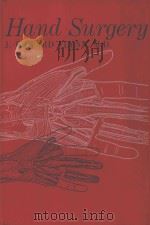
- HAND SURGERY
- 1966 THE WILLIAMS & WILKINS COMPANY
-
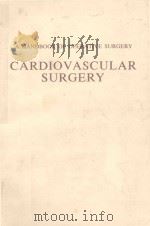
- A HANDBOOK OF OPERATIVE SURGERY CARDIOVASCULAR SURGERY
- 1970 YEAR BOOK MEDICAL PUBLISHERS INC
-

- TRANSURETHRAL SURGERY
- 1979 W.B.SAUNDERS COMPANY
-

- PLASTIC SURGERY
- 1943 MEDICAL PUBLICATIONS LTD
-
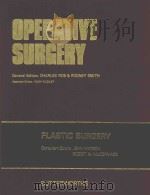
- OPERATIVE SURGERY FUNDAMENTAL INTERNATIONAL TECHNIQUES PLASTIC SURGERY
- 1979 BUTTERWORTH & CO(PUBLISHERS) LTD
提示:百度云已更名为百度网盘(百度盘),天翼云盘、微盘下载地址……暂未提供。➥ PDF文字可复制化或转WORD
